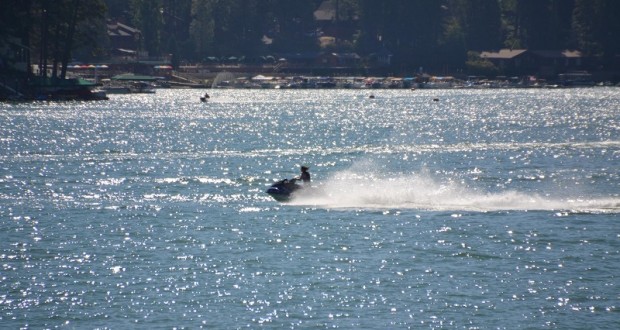CLOVIS – As warmer weather finally arrives, many of us get out and enjoy the rivers, streams, and lakes on the Sierra National Forest (SNF). These water ways are being fed by the melting snows over the High Sierra, swelling the Upper Kings, San Joaquin, and Merced rivers with swift and extremely cold water. Bass, Shaver, Huntington and many other lakes that can be found and enjoyed on the SNF will be filled with the cold waters from the many streams and creeks.
Dangers of being unprepared
As inviting as the water seems on a hot spring or summer day, it can be very dangerous if you’re not prepared. Cold water can cause hypothermia to set in quickly and overwhelm even the strongest of swimmers. Always be wary of the waterways this time of year on the SNF. With the high degree of tree mortality on the forest, boaters and others on the lakes need to be vigilant for surface debris. When boating, be sure that there are enough flotation devices — life jackets — for all on board, and that they are easy to access. Do not operate the craft while consuming alcoholic beverages, and be aware of other boaters, water skiers, and swimmers enjoying our lakes.
Be cautious anytime you or your family are near rivers, lakes and streams. When water appears warm or slow moving, there are sometimes strong currents moving below the surface. It is important to take care when walking on slippery surfaces around or even in the water. A slippery and uneven river bottom combined with the river’s swift current can cause you to lose your balance and sweep you downstream, not to mention debris or other potential underwater hazards.
Tips to keep the family safe
Here are a few additional tips to follow, for you to recreate in or around water on the Sierra NF responsibly, and safely;
- Check river, lake, and stream conditions before heading out on your adventure and always let someone know where you are going and when you will return.
- Check boating regulations for the lake and be sure that the boat operator is experienced.
- Wear a properly fitting personal flotation device (life jacket) for all river, lake and boating activities. Don’t assume you have the swimming skills to keep you afloat — even the strongest swimmers may not be a match for these water conditions.
- Inquire about swimming regulations. At some recreation sites, swimming is not recommended or may even be prohibited. Please adhere to “No Swimming” signs, as posted.
- Where allowed, choose swimming areas carefully. Often hazards are not visible in what may seem like a good place to swim or wade.
- When near rapids or other moving water, always stay on the established trails or developed areas.
- Keep a close watch on children even if they are far from the water. Water safety for children is especially important as they can quickly enter the water when your attention is diverted for only a moment.
- Don’t walk, play or climb on slippery rocks and logs near rivers and streams.
- Don’t swim or wade upstream from a waterfall, even if the water appears shallow or calm.
- Be cautious of sudden drop offs.
For more tips on swimming safely in rivers, lakes and streams go to this lakes and rivers safety page for the American Red Cross. For more tips on boating safely visit this National Safety Council page on boating safety.




